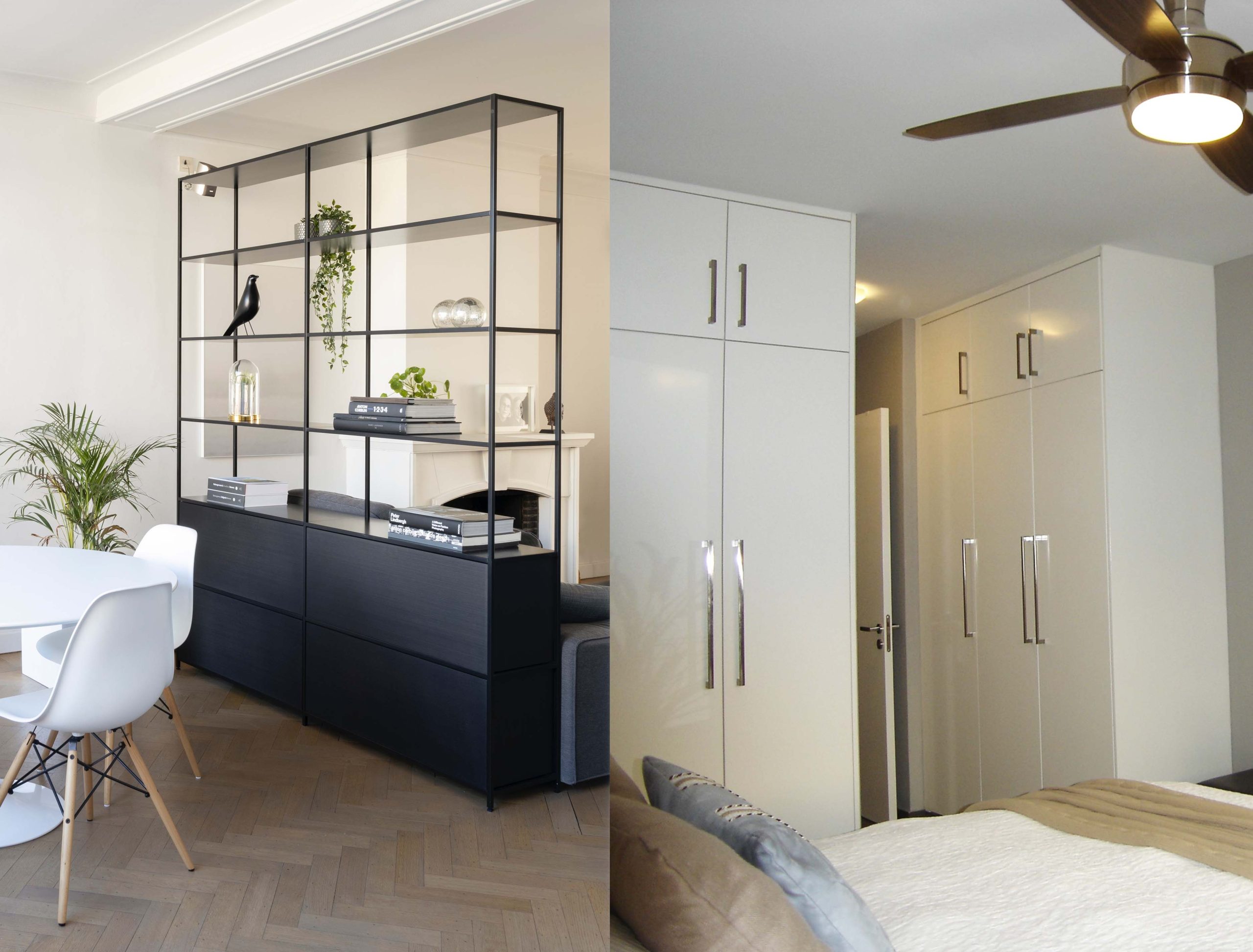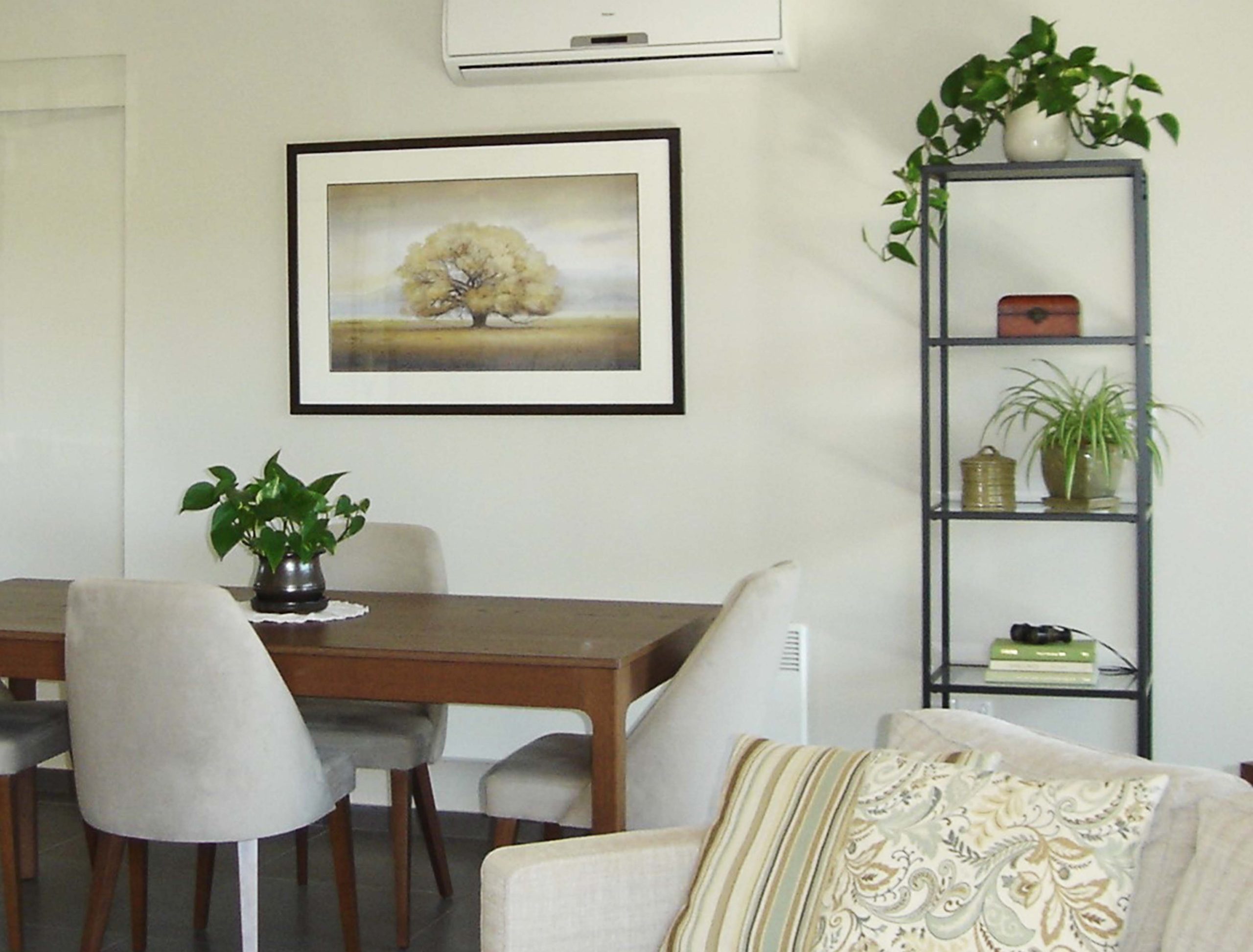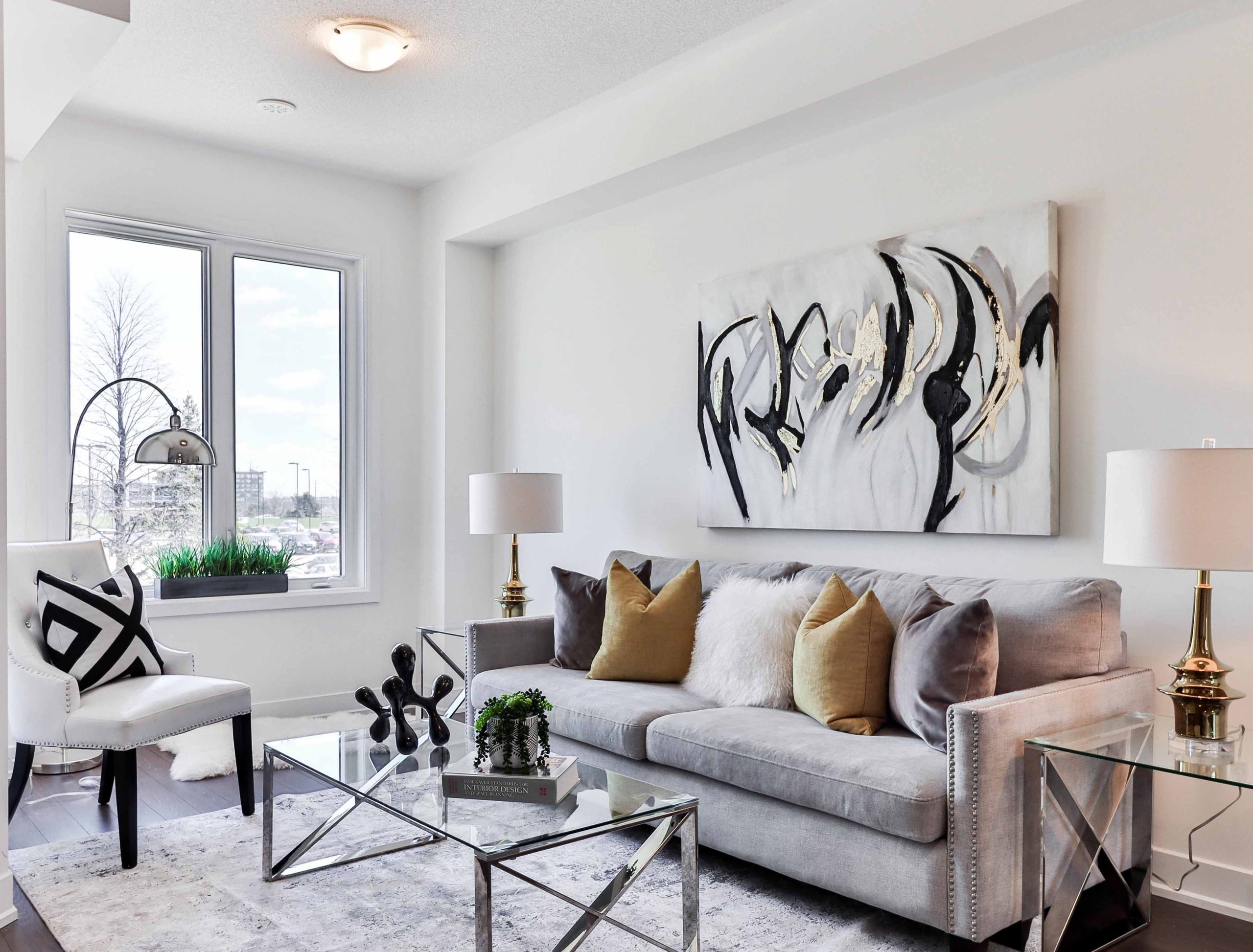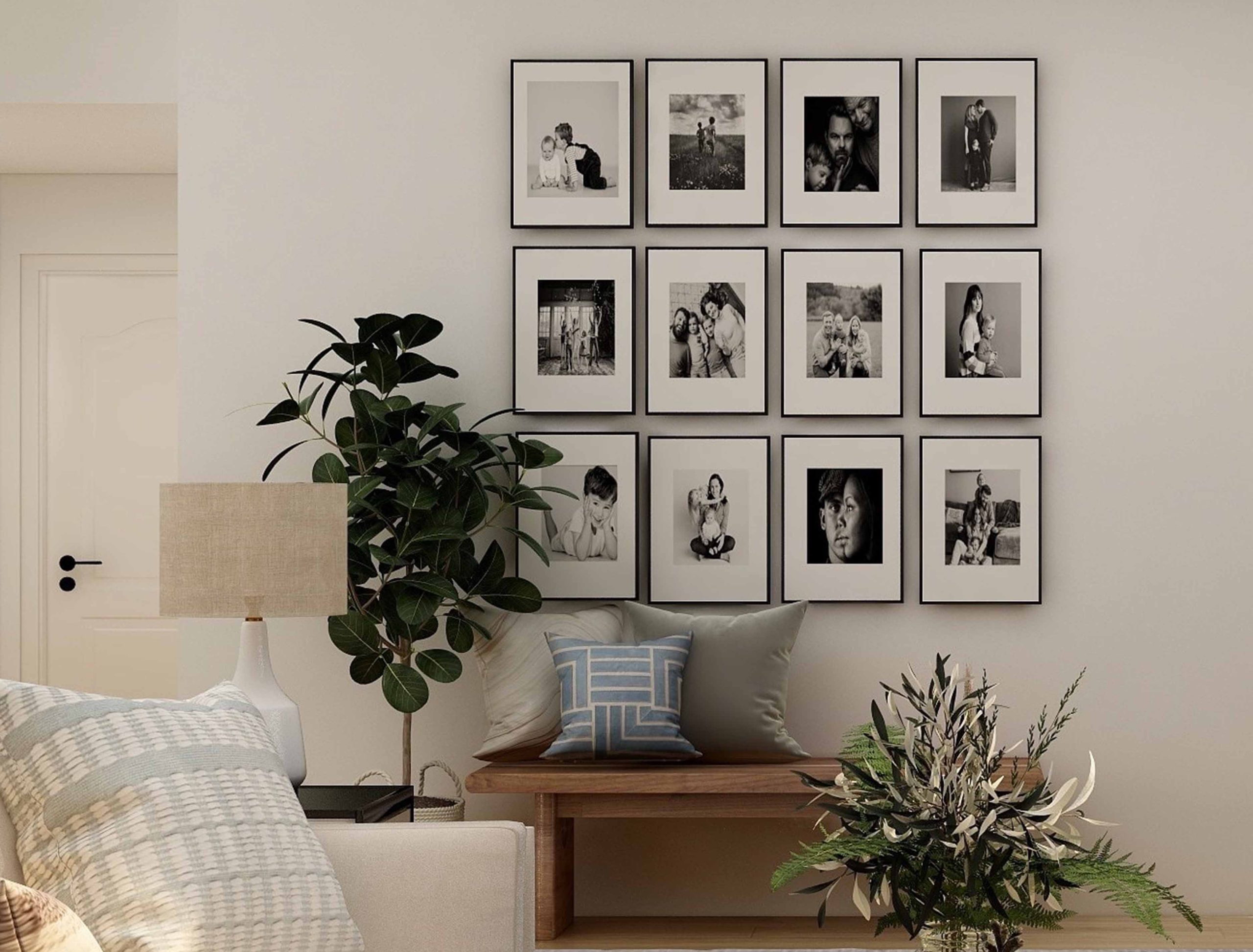
7 small home design principles to make a big impact
Small home design and decorating can be tricky. You want to be able to fit all your precious items and family treasures, photos, and mementos. But you also want to avoid clutter, and you want to save space and make it look more roomy. Apart from saving space, you also want to make your small home look elegant and well put together. So when it comes down to it what you choose to put into your small space matters!
This article is a follow-up to my previous article on small home decor ideas where I shared with you 6 strategies to make your small home feel and look bigger.
Today I’m sharing with you my 7 Small Home Design Principles so you can make the most of your size-challenged spaces.
Making the most of your small space
Large houses offer a plethora of options and space for playing around with design. But with smaller houses, condos, and apartments one needs to apply space-saving principles and be selective in order to create a home that not only meets your everyday needs but also has that stylish look that fills you with pride and joy every time you walk through the door.
In part 1 of this space-saving home decor ideas series, we discussed how to deal with your walls, floors, ceilings, and windows to make your small space appear larger.
Those 6 strategies are the foundation of any successful small home design.
As mentioned in Part 1, whether you live in a small house or apartment, or just have areas in your home that are a bit tight, you can do things to make your small space feel bigger and function better.
So let’s dig into these 7 principles for Small Home Design where I share tips on how you can use the things you put in your space to make it look larger.
Small home design principle #1: Be intentional with furniture scale and placement.
Sometimes bigger is better when decorating a small space.
Furniture scale matters, but it is relative. Just because you have a small space doesn’t mean that you must use small furniture.
Using too many small pieces in a room will make the space look busy, cramped, and therefore smaller.
Instead of using a small sofa and multiple other pieces of seating, you can use a larger sofa or slim sectional and just add 1 or 2 other smaller seating options. This will provide adequate seating but won’t crowd the room.

Photo by At Home With Dia ©
In this small open-plan layout, the area designated for lounging and viewing TV is only 12’ x 8’. A generously sized but low-profile sectional sofa provides seating for five and the visually light, structured accent chair rounds off the conversation area. This arrangement defines this area of the room without obstructing traffic flow on the left and back of the sofa.
Principle #1 – Tip 1: Consider visual weight of furniture, not just size
When thinking of ideas to implement in your small home design, consider the visual weight of furniture, not just its actual size. For example, pale-colored furniture or pieces with legs look lighter and visually smaller than boxy, dark, or overstuffed upholstered pieces.
By using pieces that are lifted off the floor with legs, your eye unconsciously notices that there is space beneath and makes the room feel airier and visually open. Also, chairs with wood or metal frames and arms that are not fully upholstered always look less bulky – see examples in the above photo.
Principle #1 -Tip 2: Maintain versatility and keep the end user in mind
Versatility is your friend when you are trying to make your small space feel bigger.
Choose furniture appropriate to the size of the room but also according to the size of the people who use it. If you or other members of the household are tall you may want to use larger furniture but practice the less is more approach in small spaces.
Use fewer, more versatile pieces instead of cramming too much into the space.
Consider a large storage ottoman that can double up as a coffee table by placing a tray on top or use a coffee table that has drawers or lifts to reveal a hidden compartment – we will cover more details on clever storage later on in this article.
Principle #1 -Tip 3: Small home design requires creativity
Rethink ‒ and perhaps toss out ‒ your preconceived notion of how a room should look. Just because you have a small space doesn’t mean you have to line up your furniture against the walls.
When applying principles of small home design, there are times when placing furniture at an angle or moving it away from the wall can make a room look and function better.
Play around with the placement of your existing furniture. You may be surprised at how better it looks by shifting things a few inches from the wall or placing a piece at an angle.
If your room is empty and you are unsure of how to position your furniture, use painter’s tape to outline the size and shape, and placement of each piece. This will help you get a visual of how it will look before you start hauling things from one side of the room to another.When doing this, always keep in mind that traffic patterns should go around or between your different furniture arrangement zones – not through your furniture placement.

Photo by At Home With Dia ©
In this open-plan entry, dining, and seating area, different areas are clearly defined with strategic furniture placement that improves the functionality of the space.
Principle #1 -Tip 4: Create the illusion of additional space
If your home’s entrance opens directly into your living space, you can create the illusion of a reception area by placing a shallow console with a drawer or shelf against a nearby wall. If space allows, include a mirror to your small home design. A plant is a perfect addition to your unofficial foyer since decorating with plants brings the outdoors in, offering freshness and interest.
Principle #1 -Tip 5: Shape matters in small home design
When you are trying to make your small space feel bigger, be strategic with the shape and placement of your furniture to facilitate traffic flow. For example, round tables are visually less bulky than square or rectangular tables and allow for more ease of movement around a small dining space.
Also, consider adaptable furniture like the above extendable dining table with 4 chairs that can look better in a tight space on a daily basis, but can expand on occasions when you want to have guests over for dinner. You can place extra matching chairs in corners of other rooms to be used as accent chairs, which can then be moved to the dining area when you need to seat more people at your table.

Photo by At Home With Dia ©
In this example, one of the spare chairs was placed in the corner of the bedroom and was brought into the dining area when needed. Also, consider using an upholstered storage bench that normally sits in a bedroom providing much-needed storage space, but can easily be used as extra seating at the dinner table.
Small home design principle #2: Use walls and vertical space to your advantage
Have you noticed that vaulted or high-ceiling rooms seem bigger than their actual square footage? That’s because the ceiling height draws your eye upward and makes the space appear larger.

Photo by At Home With Dia ©
Just like I mentioned in my previous article you can achieve the appearance of taller ceilings and make your small space feel bigger by drawing the eye up with your drapes hung as close to the ceiling as possible. With small home design you can further enhance the sense of height by hanging art stacked one over the other to form a column that makes you look upwards.

Photo on the left by Jean-Philippe Delberghe on Unsplash. Photo on the right by At Home With Dia ©
When looking for small home design ideas, tall bookcases or built-in closets are a great way to achieve the same illusion of taller ceilings, plus offer the bonus of providing storage opportunities – I will discuss this in more detail later on.

Photo by At Home With Dia ©
Tip: if your shelves or bookcases don’t go all the way to the ceiling, place a decorative element, plant, or artwork above the bookcase to make it visually taller.
Small home design principle #3: Use reflective surfaces
Polished surfaces reflect light around the room to give it more dimension and detract the eye from focusing on the actual size of the space. Shiny metals, glass, crystal, and even light fixtures with transparent shades add sparkle and bounce light around. This contributes to making the room appear more interesting and bigger.

Photo by At Home With Dia ©
Use mirrors to maximize light. When placed across from a window a mirror tricks the eye into perceiving that the space is bigger than it actually is. Just make sure that if it’s not across from a window, it reflects something visually interesting or appealing like a plant, a piece of art, or even a reflection of the overall room.
Speaking of reflective surfaces, let’s move on to talk about lighting.
Small home design principle #4: Be strategic with lighting
Lighting is very important when you want to make your small space feel bigger. Using various light fixtures and lamps distributed around the room will make it look more spacious, especially at nighttime. Try to brighten dark corners with uplights (small fixtures that can be placed on the floor or behind plants to direct light upwards) or tall floor lamps to draw your eye to the outermost perimeter of the room.

Photo by Sidekix Media on Unsplash
This room makes use of Small Home Design Principals #3 and #4 – The use of reflective surfaces bounces light around the space. Additionally, using multiple sources of artificial lighting makes the space feel bigger at night.
Tip: Come up with creative ways to add light
In the kitchen, if you don’t have under-cabinet lighting, you can easily install (or Velcro-stick) remote control puck lights under the cabinets. Another option is to place a small table lamp in a corner of the counter to add extra light and ambiance to your space.

Photo by At Home With Dia ©
If your cabinets don’t go all the way to the ceiling, consider installing remote-controlled LED rope lighting at the top of the cabinets where they meet the wall to draw your eye up and make the space look taller.
Add dimmers to the wall switch of your overhead lighting. This enables you to use that light source for overall illumination when needed, but provides you with the ability to lower the intensity of the light when you want to make the space look more intimate. Then add table lamps and floor lamps here and there to disperse light to various areas of your small space.
Of course, no matter how you furnish, or enhance your small home design, if you have things cluttering your room it will most definitely look smaller.
This leads us to the art of tidying up and hiding things in plain sight.
Small home design principle #5: Be deliberate with your storage
We cannot talk about maximizing small spaces without talking about most people’s least favorite topic, tidying up clutter. Unless you are a die-hard minimalist you or your family will inevitably accumulate stuff that eventually spills out where it doesn’t belong.
How can we tame that dreaded clutter, so it doesn’t take over valuable visual and actual space in our small rooms?
“A place for everything and everything in its place”
Yes, we have all heard the saying that we need to purge our belongings and keep only things that “spark joy” but not everyone is like the queen of tidiness, Marie Kondo.
While an uncluttered and tidy space looks larger, the key thing is to find practical and clever ways of storing and hiding your stuff.
If you are looking for small home design ideas, then this is where multifunction furniture and storage solutions come into play.
Think of using storage ottomans instead of a normal coffee table or maybe a storage bench that can double up as extra seating at the dining table. Use lidded baskets, boxes, or trunks both as decorative pieces, but also to corral everyday items like toys, supplies, extra bedding, keys, mail, and remotes. And practice putting things in their designated place. As the old saying goes “a place for everything and everything in its place”…

Photo by At Home with Dia ©
Here, even the doggies learned that their toys are stored in a special place 😊
To make your small space feel bigger consider opting for enclosed cabinets vs open shelves or a combination of both, so you can hide the not-so-good-looking stuff behind closed doors and put the pretty stuff on display.
Of course, if you already have open bookcases or shelving don’t worry, you can achieve the concept of enclosed storage by using lidded boxes or baskets that fit into your shelves.
Small home design principle #6 – Be strategic when organizing your home.
Create a “drop zone” near the entrance of your home, so things don’t find their way into spaces they don’t belong. Use small boxes, baskets, and bowls to hide stuff in plain sight. Organize your drawers and closets with systems that help you put things away. It doesn’t have to be elaborate or fancy. Simply compatibilized drawers, closets, and cabinets by keeping like-items together. The key point is to have your stuff in an area that is convenient but ideally out of sight.

Photo by Jeff Sheldon on Unsplash
Storing things that are used for a certain task or purpose in a specific place, can go a long way in helping you get into the habit of putting things where they belong.

Photo by No Revisions on Unsplash
A small cabinet or chest of drawers next to your entrance is a perfect place to drop your car keys, wallet, sunglasses, dog leash, and even shoes. A tray or a bowl on the top surface can also be used as a catch-all. In this example, the basket offers a convenient place to store scarves and the drawer hides an array of things you need frequently as you come and go to your home. Note the leather puff that can be used to sit and put on your shoes before leaving the house.
Tip: Don’t try to do it all at once – tidying for your small home design is a process
Tackle one drawer or one closet at a time. Little victories over your clutter will give you a sense of accomplishment and will encourage you to continue your goal of tidying up and keeping it tidy.
If you have children, get them involved by making the activity of tidying up a game or a competition of who can put their stuff away faster and more neatly.
The satisfaction of getting things done is contagious and the little ones are more likely to keep up the good work when they see how excited and happy it makes you.
Small home design principle # 7: Be intentional with your décor and styling
For small home design the size and quantity of accessories, wall art, etc are very important.
Even nice-looking decorative pieces on your walls or surfaces can contribute to “visual clutter” which hinders your efforts to make your small space feel bigger.
Too many different small items on surfaces or walls create overstimulation. The eye needs some blank space to rest, especially when the room is small.
If you have collections of items you love, practice a revolving décor strategy. For example, choose a few key items to display during the winter, and store the other items until spring. Then, you can bring out the stored items and decorate with them, while storing your previously displayed pieces. This ensures you are enjoying your cherished items and gives your small home design styling a fresh look from season to season.
Tip: Upscale your décor – Larger items but fewer pieces
On the walls, use large-scale wall décor instead of a collection of smaller frames in different shapes and colors. If you love the look of a gallery wall, use frames in the same or similar color. This will help make the wall arrangement appear as one unit instead of multiple random images cluttering the wall.

Photo by Collov Home Design on Unsplash
If you are using photos, ideally, they should all be in black and white or all in color but always use the same color mats to unify the look.
I hope I’ve inspired you to look around your space and consider some small home design ideas and make changes to make your small space feel bigger and work better for you.
I always say that everyone deserves a welcoming and stylish home no matter what their budget or the size of their spare.
Making your space into a well-decorated and comfortable home is a process and it takes time. Don’t worry if it doesn’t all come together at once. Keep these tips in mind as you take small steps to make your space work better and look bigger than it is.

